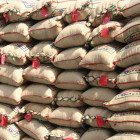April 21, 2011; Source: The Oregonian | In the wake of the fallout from last week’s “60 Minutes” investigation into Greg Mortenson’s Central Asia Institute, nonprofit watchers are more closely examining sector spending. Reporter D.K. Row of The Oregonian, which has a nonprofit newsbeat, interviewed two well respected international development and relief nonprofits based in the Pacific Northwest – Mercy Corps and Medical Teams International – about their operations.
While the two programs differ in how they spend and report use of funds, both model financial transparency far beyond federal and state reporting requirements. Because of that, potential donors can clearly see how spending patterns align with mission and program focus.
Both organizations are sizable, with substantial on-the-ground personnel in tough operating environments around the world. As an example of country-specific financial reporting, consider Haiti.
Mercy Corps raised $46.4 million for relief and follow up development projects in Haiti: to date, it has spent 37.9 percent of those funds. The greatest expenses so far have been direct relief: distributing cash vouchers to earthquake victims, small business grants and loans, food distribution, and hygiene. Eight percent of total dollars supported field-based personnel, and 15 percent of total dollars were allocated to overhead.
Sign up for our free newsletters
Subscribe to NPQ's newsletters to have our top stories delivered directly to your inbox.
By signing up, you agree to our privacy policy and terms of use, and to receive messages from NPQ and our partners.
Medical Teams International raised $5.2 million in cash for Haitian relief, as well as $9.3 million in-kind: to date, it has spent 48.1 percent of cash received. While it allocated only 4 percent of dollars to overhead, other expenses are much more concentrated in staff and general costs. This makes sense given that one of its key roles is to mobilize a complex network of in-kind donations.
What does this mean? Not that low overhead is better than higher overhead, nor that it’s preferable to target relief donations to non-personnel costs rather than personnel costs. Both organizations are, in the words of Doug Stamm, CEO of Portland based foundation Meyer Memorial Trust, “among the world’s leading and reputable international relief organizations”.
The numbers do beg the question of why less than half the dollars received have yet to reach Haiti. That this question rises to the surface, however, underscores the usefulness of such transparent reporting.
Mercy Corps and Medical Teams International demonstrate that financial transparency is possible and illuminating, even for complex cross-cultural international relief work. The tragedy about Central Asia Institute’s situation is its failure to recognize that transparency must trump charisma in vetting good nonprofit work.—Kathi Jaworski













